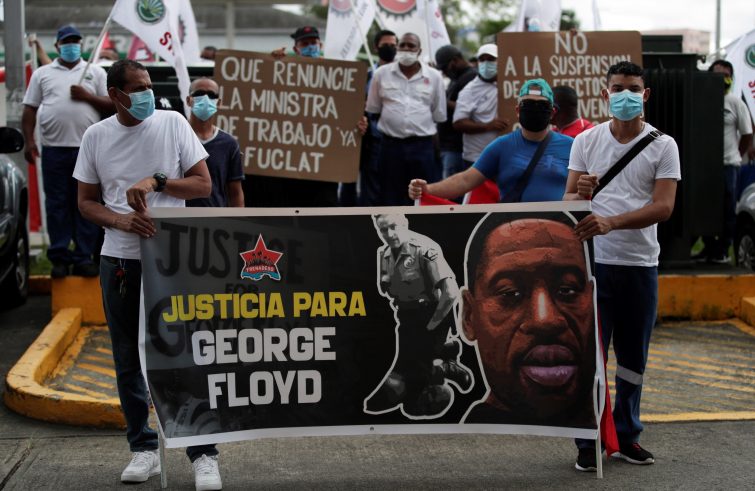
(from New York) On his knees for almost nine minutes with the priests of his diocese while holding up a simple banner bearing the words “Black lives matter”. Msgr. Mark J. Seitz, bishop of El Paso on the border with Mexico, sadly known for the immigration crisis and for the deadly mass shooting of 22 people by a white supremacist in a shopping mall last August, expressed his solidarity with African-American protesters, attending Memorial Park in his city. Last Sunday the park was plagued by violent clashes between demonstrators protesting the murder of George Floyd and local police forces. Monsignor Seitz stood on his knees for the same amount of time that the Minneapolis police officer kneeled on Floyd’s neck until he died. He did not deliver a statement, he arrived and left with the same composed silence. Even Officer Garren Hoskins stood on his knees facing a protester as he talked about his faith with the man on the other side of the barricade, a faith shared by many, angrily protesting outside Nashville Central Police Station. Garren is not the only policeman who made this gesture. The chief of police in Orlando, Florida, along with his officers and the sheriff of Orange County, also knelt down to pray with the protesters.
Not only looting, arson, urban guerrilla warfare… there are also prayers shared beyond the barricades and the pickets, hugs between blue uniforms and “black lives matter.”
The protests in America feature also these faces and stories, as dialogue and prayer remain alternatives to violence. “What’s the point of gathering in church to chant together if we are not there when people are suffering or dying?” said Reverend Zachary Hoover, director of L.A. Voice, a multi-racial and multi-religious organization that has been promoting prayer vigils for Los Angeles County.
Yet the churches have been the focus of controversy with President Trump over the last three days. On June 1, after ordering that protesters stationed in front of the White House be dispersed with tear gas and rubber bullets, the president went to St. John’s Episcopalian Church using the Bible as prop for a photo opp. However, yesterday he and the first lady visited a shrine dedicated to Saint John Paul II in Washington. One hundred protesters were waiting for him outside, in addition to the press. Archbishop Wilton D. Gregory of Washington strongly criticized the President’s decision as well as the permission granted for this pilgrimage. “I find it baffling and reprehensible that any Catholic facility would allow itself to be so egregiously misused and manipulated in a fashion that violates our religious principles,” he said. The Archbishop, who is African-American and is among the drafters of the letter against racism endorsed last year by the US Episcopal Conference, criticized the violent means proposed by the President, explaining that St. John Paul II “was a defender of the dignity and rights of human beings who certainly would not condone the use of tear gas and other deterrents to silence, scatter or intimidate them for a photo opportunity in front of a place of worship and peace.”
The Episcopalian bishop likewise criticized the US President who hadn’t even announced his visit, and so did other prelates, stating that religion cannot be used as “a political instrument.” Yesterday Trump also signed an executive order to allot at least $50 million a year for programs that advance religious freedom worldwide.
Former U.S. President George W. Bush, who had avoided the spotlight since his retirement, sent out a call for unity and compassion in the country, using words as “tragedy, systemic racism, tragic failure.” He called for greater solidarity with African-Americans, while expressing understanding for their protests. Bush called for a return to the roots of American greatness, whereby all men are created equal and endowed with rights by God.












